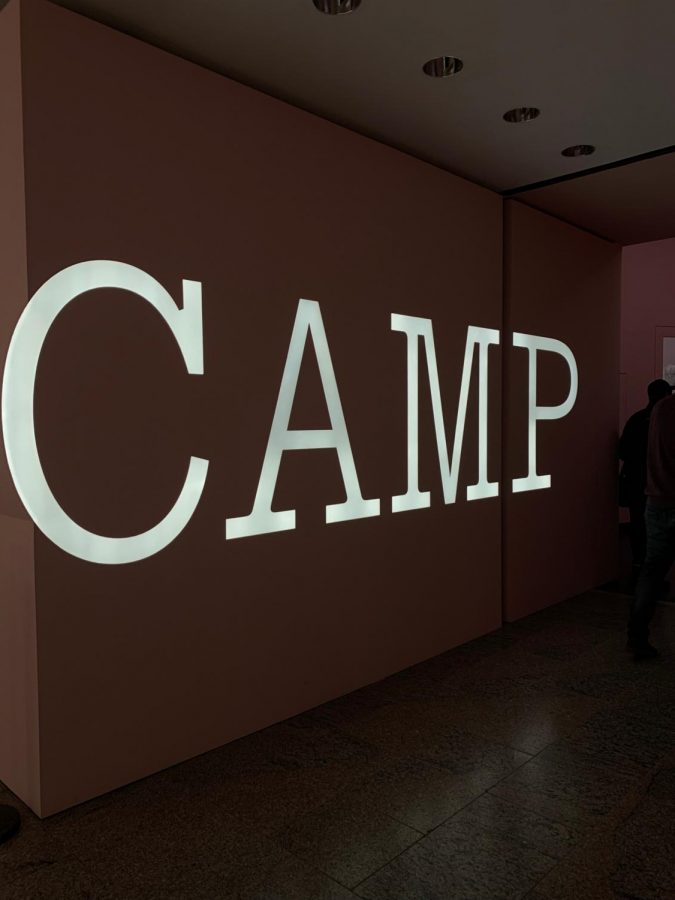A Review of ‘Camp: Notes on Fashion’ at the Met Museum
The 2019 Met Gala Exhibit
The Metropolitan Museum exhibit entrance welcomes visitors to ‘Camp..’
Gucci, Moschino, Schiaparelli, Marc Jacobs, Chanel, and Yves Saint Laurent are just a few of the names that line the walls of the Metropolitan Museum’s Camp exhibit. This year’s Met Gala theme, ‘Camp: Notes on Fashion,’ was built from Susan Sontag’s 1964 essay ‘Notes on ‘Camp,’ and the theme left many red-carpet fanatics wondering what it meant. Even in the exhibit, ‘Camp’ was never singularly defined. Sontag’s fifty-eight definitions for Camp filled up a room, and viewers were left to gradually build their own definition as the exhibit progressed.
“The big message [of the exhibit] is to celebrate individuality and free spirit in all facets of one’s identity” said Sophie Hyde ’20.
Matthew Nielsen ’20, a prospective exhibit attendee, is excited to experience the process himself. Nielsen explained that “Camp is a really weird way to describe fashion because it is not very common,” but he looks forward to understanding, “what people describe as the peak of fashion.” Not only is the exhibit a personal journey of understanding Camp fashion, but it reveals an important part of history to which the fashion was crucial.
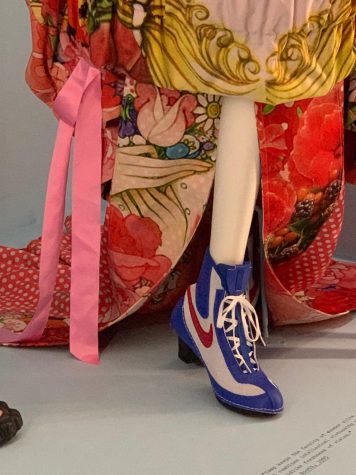
A unique Nike heel shows the clash between cultures that makes Camp so radical.
The exhibit sprung viewers into the past for its first half, starting with the concept of “se camper” (“to posture”), developing Camp through the lens of French Versailles, Oscar Wilde, Christopher Isherwood, and Susan Sontag herself. By the middle of the exhibit, Camp could be condensed into a cloud of ideas, forming an image of layered artificiality, extremity, and extravagant culture that often marks proponents of Camp. The exhibit placed an emphasis on queer culture, in which Camp was frequently embraced at its start. The individuality that members of the queer community were able to enjoy through camp is still appreciated today. Sophie Hyde ’20 agrees, stating that, “the big message [of the exhibit] is to celebrate individuality and free spirit in all facets of one’s identity.”
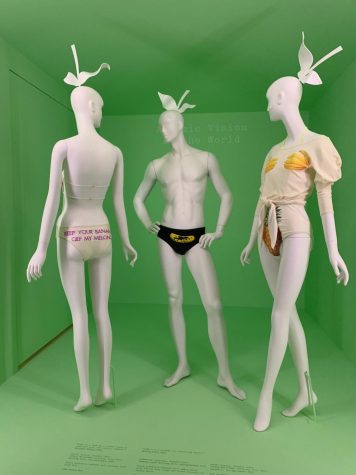
Models in the Camp exhibit.
Beyond the content of the exhibit, the Met utilized the space of the exhibit in ways that override museum exhibit norms. Just as Camp is an outlet for less conventional artists, the exhibit offered a less conventional exhibit layout. Hyde commented on the unique format of the exhibit, stating that she “really enjoyed the decor and graphics of the exhibit and the layout, which were a nice departure from the traditional exhibitions at the Met… the plain white walls and boring fonts.” After attendees walked through the historical timeline at the exhibit’s opening as well as Sontag’s essay, they reached a large room lined with colorful windows into different representations of Camp. The beautiful, endless setup of the room emulated the essence of Camp, and it was a fitting culmination for the exhibit.
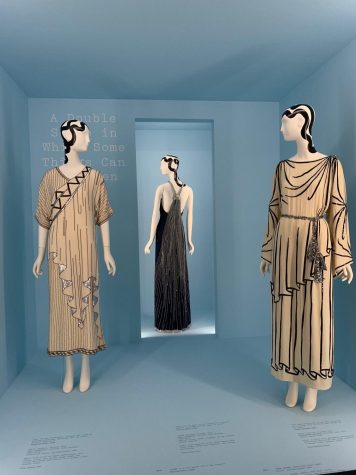
These thought-provoking outfits represent ‘A Double Sense in which Some Things Can be Taken.’
From “dandyism in the age of [counter]culture” to “the psychopathology of affluence” to “outrageous aestheticism,” the final gallery presented niche interpretations of Camp pieces that connected to all audiences in some way. Highlighting the androgynous, queer nature of Camp as well as the radical elegance of the 250+ objects presented in the exhibit, the Met left nothing out in defining and presenting Camp to the public. This year’s Met Gala theme was multi-layered and flexible to various interpretations, but it is up to you to decide whether the artists in attendance did Camp justice once you view the exhibit.
Whether you practice Camp yourself or you would rather admire fashion from afar, the exhibit represents an important part of fashion history that everybody can learn from. According to Leann Goldberg ’20, “Camp shows that minorities can find outlets in unconventional mediums,” and productive coping is something everyone should learn to appreciate. Though extravagance may be limited in our world today, it is something you can find in abundance at the Metropolitan Museum’s Camp exhibit.
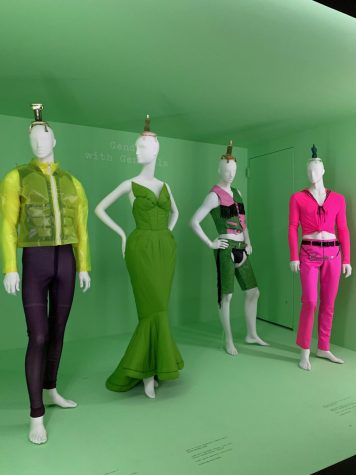
Shedding light on the androgynous and gender-fluid nature of Camp, these colorful pieces are thought provoking.
Celeste Abourjeili is the Editor-in-Chief of ‘The Science Survey.’ She has a passion for journalistic writing because it gives voice to all groups...

